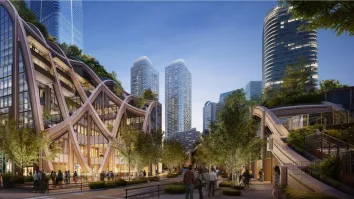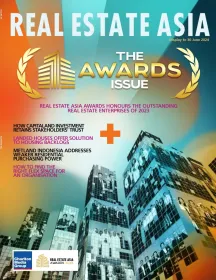
Jakarta CBD office occupancy rates hit sub 80% for the first time
The average occupancy rate fell 1.1% to 79.2% in Q2 2021.
A recent report by Colliers says some project completions in Jakarta were postponed due to construction delays, financing or market conditions. Rasuna Said has actively contributed to new office supply in the CBD in consecutive quarters.
Trinity Tower (previously known as Daswin Tower) began operating officially and brought the cumulative supply to 6.96 million sq m in Q2 2021. The progress of construction of future office buildings was recorded as still relatively slow and the completion of those buildings will likely be rescheduled.
Here’s more from Colliers:
We also recorded active supply growth outside of the CBD. Wisma Barito Pacific 2 was officially in operation, bringing the cumulative supply to 3.63 million sq m in Q2 2021. Several other buildings are also expected to be ready in the second half of 2021. As with the CBD, the additional office supply is also estimated to be relatively limited in the next two to three years.
The completion reschedule is indicative of the fact that construction activity continues to be impacted significantly during the second wave of the pandemic. Developer sentiment has been, understandably, affected by a cocktail of uncertainty, spiraling build costs and aversion to risk among lenders. Although the supply pipeline is relatively limited at least for the next 2-3 years, it is noted several potential projects are currently in the planning stages. It is quite possible, should the pandemic be resolved, the economy recovers and landlords engage committed tenants, that a start on the projects will likely be imminent.
Without dominant sector, the vacancy rate is poised to rise
The average occupancy rate has continued in a downward trend. In the CBD, the average occupancy rate was recorded at 79.2% in Q2 2021, a drop of 1.1% QOQ. This is the first time the average occupancy rate in the CBD has fallen below 80%. The average occupancy rate in the CBD is expected to continue to decline up to the end of 2021. However, with additional supply expected to be relatively limited, the occupancy rate decline is not as drastic as it has been in previous quarters. Outside the CBD, the average occupancy rate was recorded at 78.4%, a drop of 1.2% QOQ. Conversely, a relatively larger additional supply outside the CBD may result in a continuation in the decline in the average occupancy rate to 2%-2.5% by the end of 2021.
Despite still being in a negative phase, the demand level for office space, especially in the CBD, remains dynamic, fuelled by industries such as shipping, logistics, animal food processing, ecommerce, consumer products and construction still looking for new spaces, either in existing buildings or as expansions. Demand for office space might derive from state owned companies that plan to build their own buildings. When the construction period starts, they might search for a temporary office space in commercial office buildings (swing demand).
On the flipside, we note that there have been several large-scale office tenant space reductions by companies in the insurance, technology, services, hospitality, travel and retail industries. However, this reduction in spaces by companies does not mean a decrease in business performance, but is more because of cost efficiencies.
Coworking space is also being re-optimized as a business models, because for some time its expansion has been too aggressive. Currently, several big players in the coworking space business are reducing expenses by seeking early terminations or renegotiations with landlords, especially in terms of lease periods. However, the future of coworking space is expected to brighten, because many companies impacted by pandemic will adopt greater business flexibility in the future.
This is perhaps the best time to negotiate; rents are expected to be more range bound
A tumultuous year has made a significant dent in office rents. Firms that have downsized have had an impact on occupancy, and rents continue to come under pressure from shadow space and large future supply. Landlords with emerging vacancies began to adjust rental expectations by a larger magnitude. Currently the average rent in the CBD has been recorded at IDR249,537. We noted around 15% of total operating office buildings have reduced rental rates, which are forecast to continue to decline, leading to a full year 2021 rental correction of 4% YOY in the CBD.
Conversely, outside the CBD, the average rent has increased to IDR185,447 in Q2 2021. This growth was due to the operation of new office buildings that set higher rents than the market average for the area outside the CBD. Nevertheless, due also to new building completions, the average rent in the area outside of the CBD is expected to contract by the end of 2021.
In what is still a tenant market situation, landlords mostly continue to be accommodative of the demands of occupiers and offer competitive transacted rents to tenants. Lot incentives are also being provided, such as fitting out allowances and rent free periods. The fitting out cost can be paid in installments over the period the tenant occupies the building. Rent free periods commonly given by landlords range from 1 to 12 months, depending on how large a space a tenant will occupy in the building.
Meanwhile, the average service charge has remained relatively stable in the past 18 months. In the CBD, the service charge was registered at IDR82,193, and at IDR61,953 in the area outside the CBD. Some landlords are currently also provided service charge discounts


















 Advertise
Advertise


